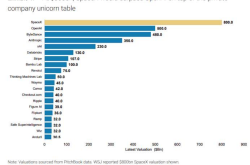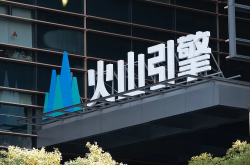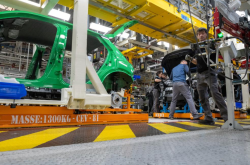After 48 Hours of Intense Work! All the Highlights of Huawei Developer Conference 2025
![]() 06/25 2025
06/25 2025
![]() 874
874
Here are the most comprehensive insights from the sub-forums at HDC 2025.
Every Huawei Developer Conference (HDC) is a thrilling technological event, and HDC 2025 was no exception, reigniting the enthusiasm of developers, ecosystem partners, and the general public.
On June 20, Yu Chengdong, Executive Director of Huawei and Director of the Terminal BG, announced the commencement of the HarmonyOS 6 Beta program for developers. His statement, "HarmonyOS will inevitably become the digital foundation for China's thousands of industries to fully enter the intelligent society," inspired countless individuals. Reflecting on the past 635 days, Yu Chengdong proudly declared:
The largest-scale joint innovation in the history of the HarmonyOS operating system and application ecosystem has been achieved.
This is no exaggeration. Over 9,000 applications participated in creating over 70 system-level innovative experiences, more than 30 partners collaborated on over 50 scenario-based innovation projects, and over 30,000 applications and meta-services were developed and actively updated at full speed. These rapidly growing numbers are not only testament to the collaborative efforts of Huawei and its partners but also mark a complete reshaping of the operating system ecosystem and developer practice paths.
However, numbers alone do not tell the full story; the keynote speech provided a strategic outline. If you, like me, spent time delving into the specialized forums of HDC 2025 over the following two days, you would have discovered even more insights and details.
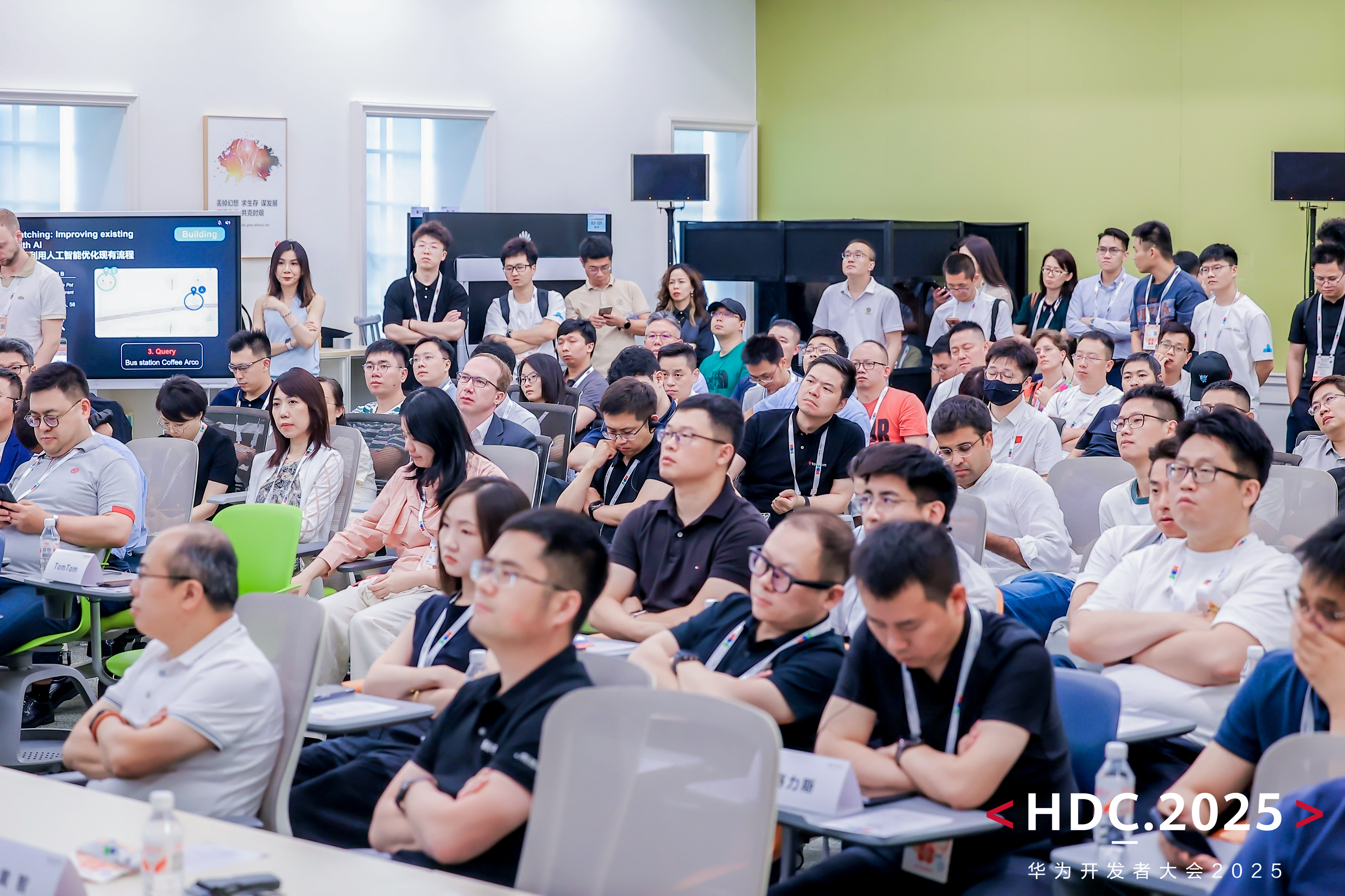
Whether it's the application and implementation of Harmony Intelligence, how meta-services and content distribution create new entry points, or how applications across various industries can quickly adopt HarmonyOS and grow, crucial clues are hidden in the details of the sub-forum topics. Even more impressive is how Huawei, alongside partners such as DaMai, Gaode Maps, WeChat Work, and Bank of Suzhou, is breaking through scenario and technology boundaries with a collaborative and co-creation mindset.
Harmony Agent + Intent Framework: Harmony Intelligence Transforms Interaction Experience
One of the standout highlights of HDC 2025 was the debut of the Harmony Agent Framework (HMAF). It serves as a key framework for HarmonyOS in the realm of AI and showcases HarmonyOS's user experience design philosophy in the AI era.
During the sharing at HDC 2025, the head of the XiaoYi product department at Huawei Terminal Cloud Services bluntly stated that today's applications are undergoing a stage of agent transformation. The Harmony Agent Framework (HMAF) emerged at the right time, comprising applications and agents, the protocol layer, and the platform layer. It proposes four major interaction forms for agents: manipulation, accompaniment, GUI tasks, and task coordination. Simultaneously, the new Harmony Agent can quickly reach users through various entry points, such as system-level and in-app entry points. This set of standardized interfaces is also open to developers and partners.
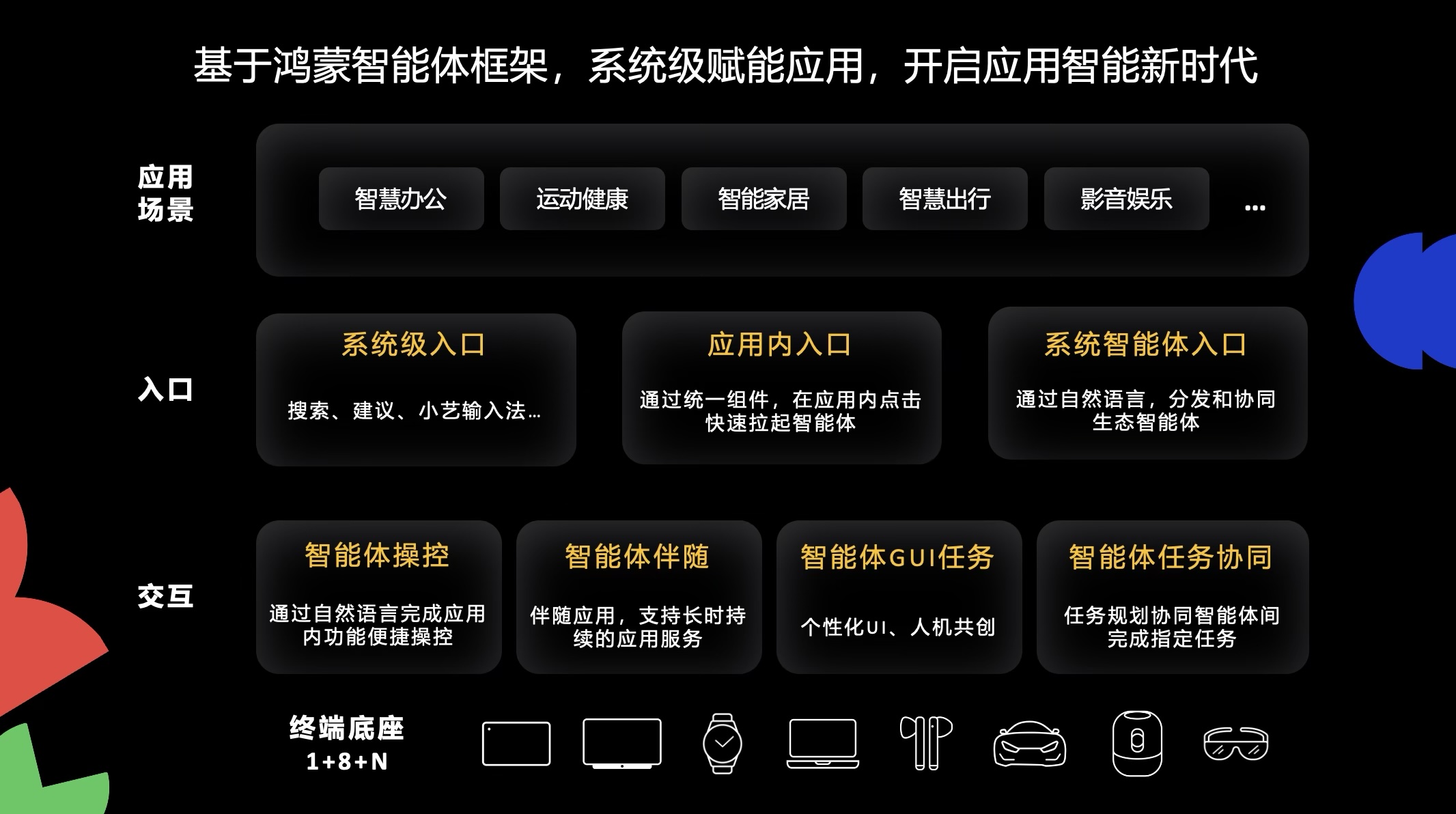
DaMai Entertainment's sharing also confirmed this new direction. By connecting to the Harmony Intent Framework, scenarios that were previously only accessible within the app have transitioned to the experience standard of "getting it done by speaking out." DaMai and Taopiaopiao can now achieve one-step functionality and content search. For instance, users can simply say, "XiaoYi, help me check Jay Chou's concert," and the Intent Framework will pull up the DaMai app to check the performance time and available sessions. In the future, it will also support multiple intent scenarios, such as natural language dialogue for ticket purchase and querying purchased orders.
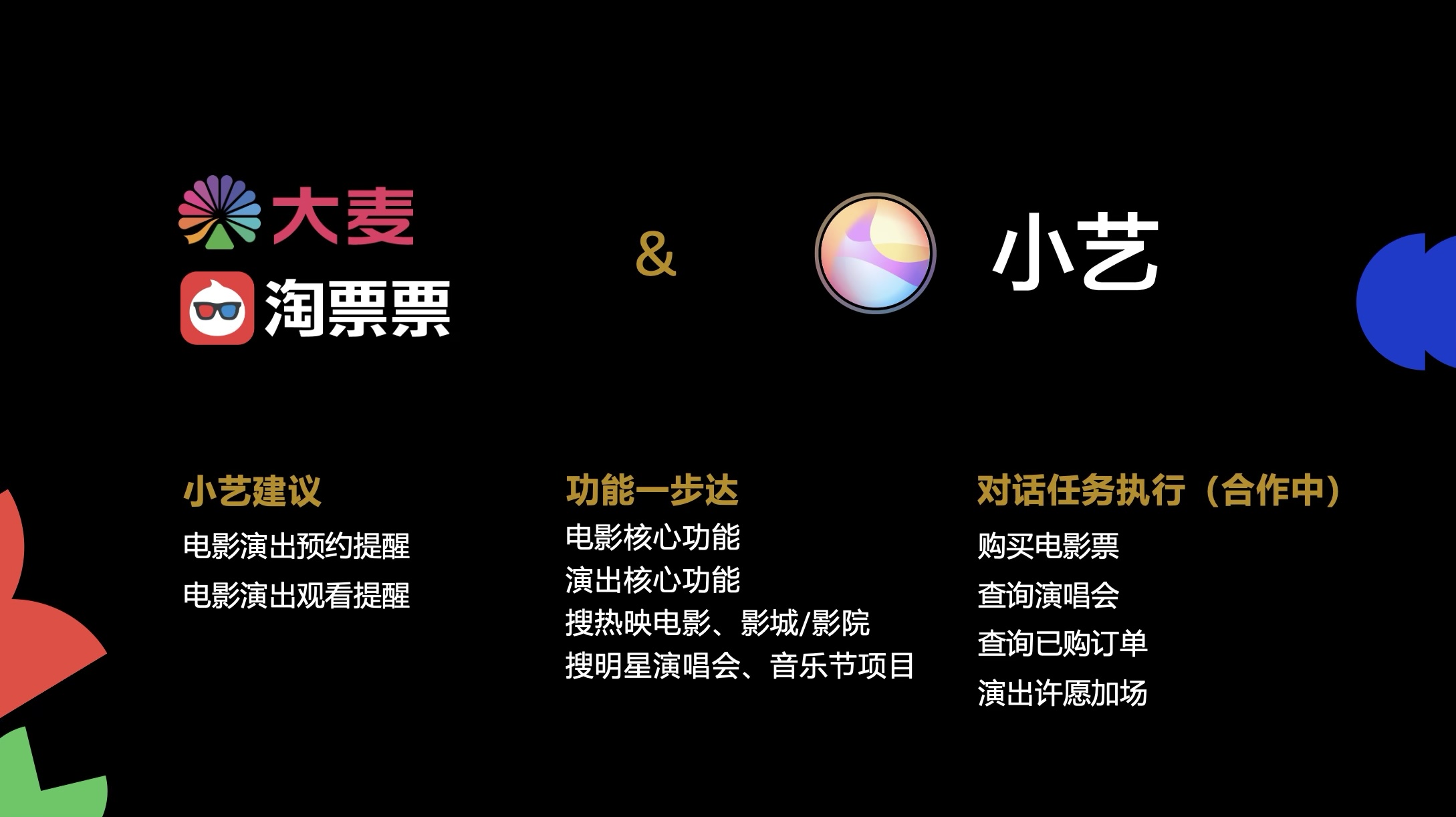
A standardized connection is established between the Intent Framework and DaMai's MCP tool. By simply using the IDE tool to input prompt word annotations, existing capabilities can be quickly connected to XiaoYi, significantly reducing development costs and shortening the launch cycle.
Gaode Maps demonstrated the "one-sentence navigation/taxi hailing" feature in-depth cooperation with XiaoYi. The intention to confirm navigation or taxi hailing through XiaoYi can directly pull up Gaode Maps for service. Additionally, based on the combination of the Harmony Intent Framework and Gaode's intent understanding, XiaoYi's suggestions provide road condition reminders and scenario recommendations (such as nearby food, weekend trips, etc.) based on commute time, personal location, user personas, etc., enhancing scenario fit and enabling Gaode Maps to achieve precise service recommendations across multiple scenarios. In the future, Gaode Maps will also collaborate with XiaoYi to jointly build a refined service experience across five vertical scenarios: navigation and travel, car owner services, lifestyle services, user assets, and operational activities.
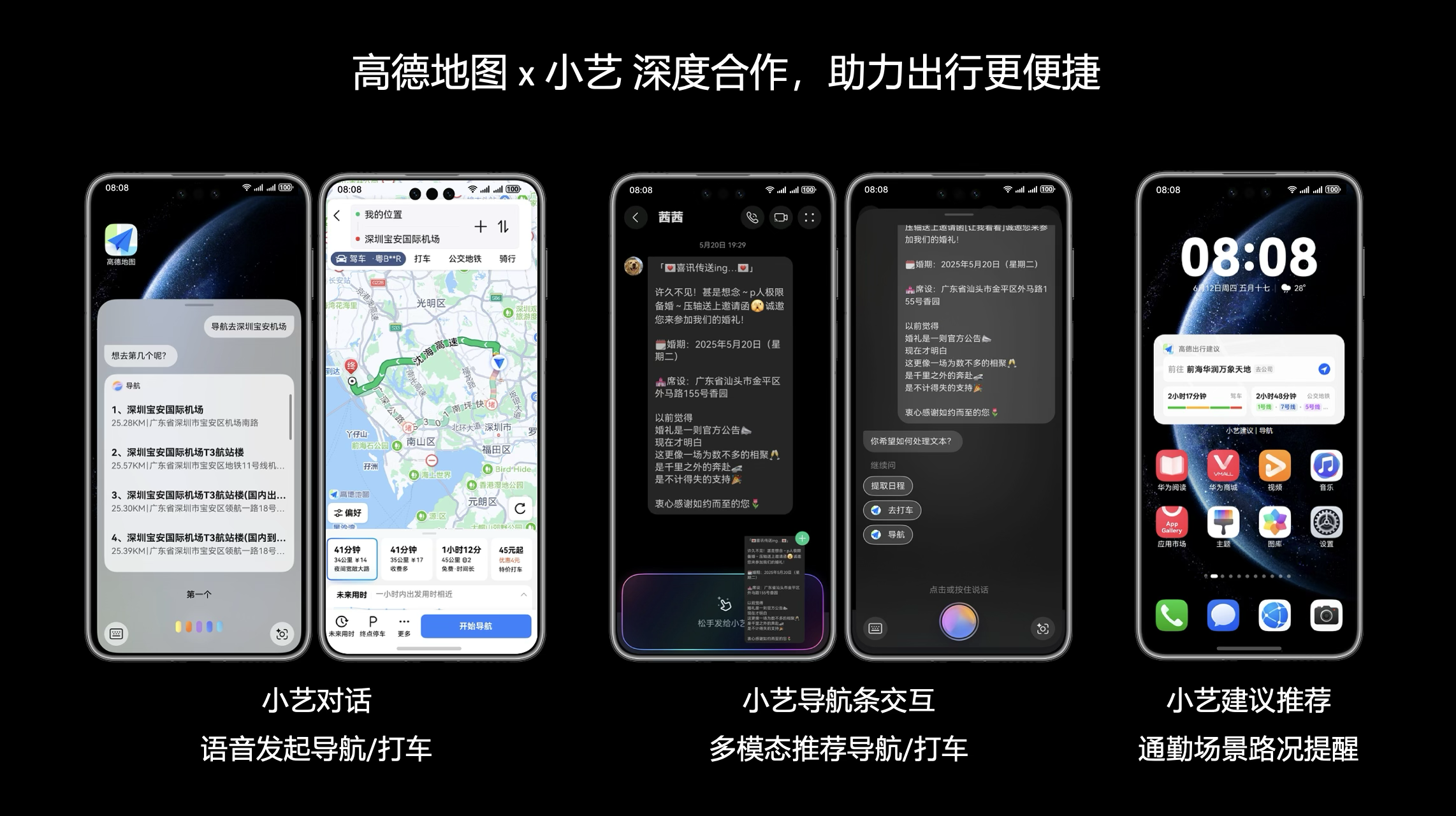
In summary, the signal released by HDC 2025 in the direction of AI is clear. Application interactions are moving towards "simplification" and "intelligence," with one-step demand resolution through XiaoYi's system-level entry points and intent framework. The cases of DaMai and Gaode Maps provide highly valuable examples for other applications.
Three Office Collaboration Giants Showcase New HarmonyOS Playstyles Together
At the "Government and Enterprise Internal Application Forum" of HDC 2025, a major highlight was the gathering of leading office collaboration platforms DingTalk, WeChat Work, and Feishu. They collectively showcased their exploration with HarmonyOS in the field of office collaboration, providing a good benchmark for the co-construction of the HarmonyOS ecosystem.
For example, DingTalk presented the "1+1+N" AI Government Super Agent in its sharing. Here, "N" represents N agent application scenarios, including general agents like Super Assistant, PPT Smart Creation, Document Smart Writing, and Knowledge Smart Search, as well as business agents such as AI Digital Cadre and AI Statistics Assistant. Simultaneously, DingTalk also stated that the "Government Ding" HarmonyOS version is accelerating adaptation and development, with plans to launch version 1.0 in June.
WeChat Work introduced the development journey of its HarmonyOS version. From the project launch in July 2024 to the present, the WeChat Work HarmonyOS version has completed the full launch of core office capabilities, including IM, calendar, meetings, documents, and the workbench, covering over 90% of office scenarios. Additionally, WeChat Work revealed that, leveraging HarmonyOS's "once developed, deployed on multiple ends" advantage, the WeChat Work HarmonyOS version achieves a unified experience across multiple devices such as mobile, tablet, and computer with a single set of code, greatly improving development efficiency.
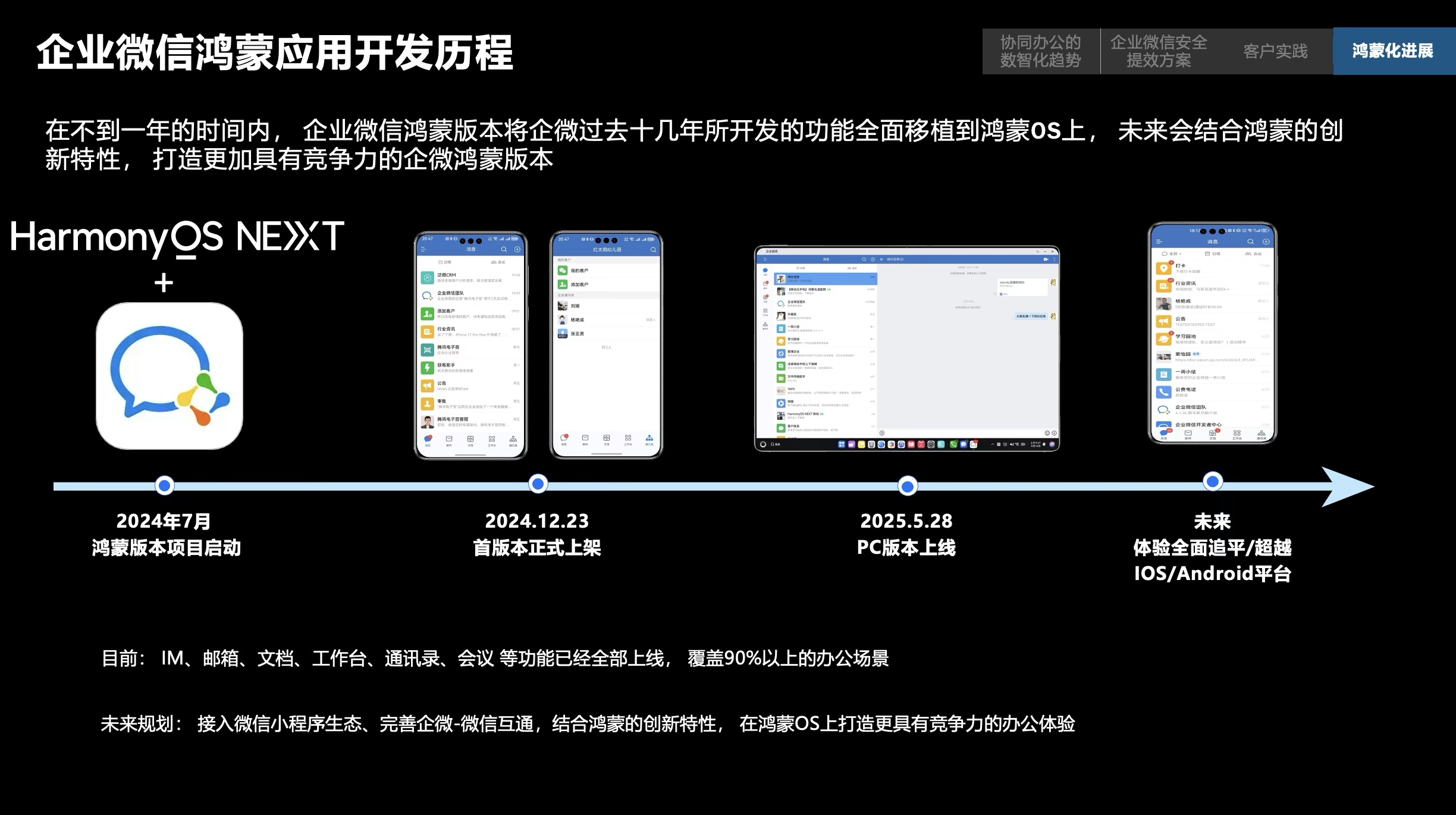
WeChat Work also shared that it is creating a more differentiated experience centered around HarmonyOS's innovative features. In fact, the WeChat Work HarmonyOS version not only accesses the privacy window anti-screenshot/screen recording feature but has also fully applied the "Security Access Mechanism," realizing a HarmonyOS-exclusive secure office experience by accessing secure Picker, unified scanning, and calendar capabilities.
Feishu has also achieved adaptation to HarmonyOS's multi-form devices through "once developed, deployed on multiple ends," including straight phones, foldable screens, tablets, computers, etc. It provides interface adaptability from the bottom bar to the wide bar and from single-column to three-column based on the breakpoint system, significantly enhancing the consistency of cross-terminal work experience. The Feishu product expert also introduced that, in terms of distributed collaboration capabilities, Feishu supports innovative experiences such as video conference continuation, dragging and dropping images to inquire with XiaoYi, and scanning codes for direct access, all of which reflect the in-depth exploration of HarmonyOS capabilities by the Feishu HarmonyOS version.
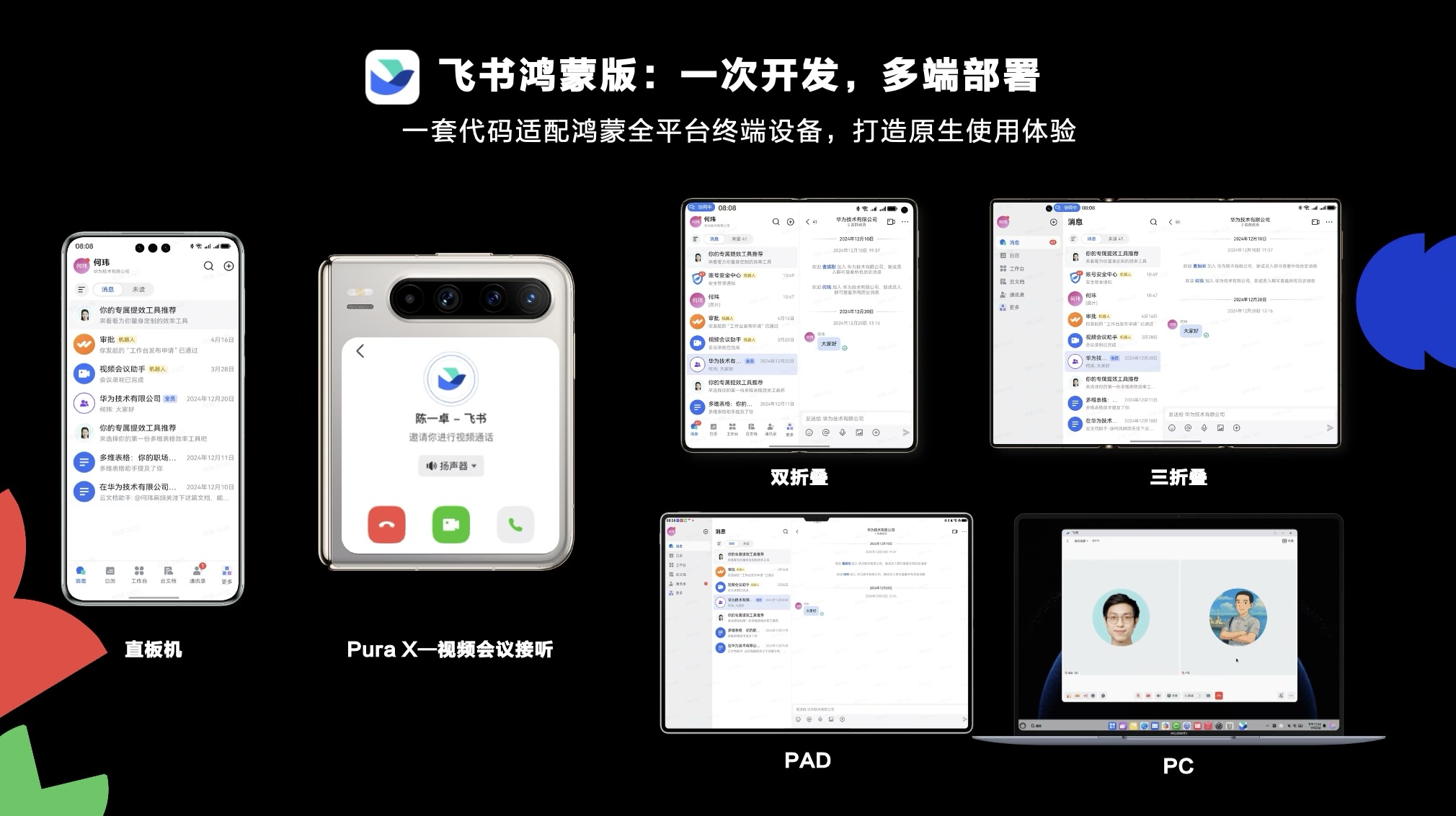
Finance, Culture and Tourism, Transportation: HarmonyOS Boosts Industry Intelligence
During the keynote speech of HDC 2025, Yu Chengdong stated that HarmonyOS will inevitably become the digital foundation for China's thousands of industries to fully enter the intelligent society. This is not an empty statement. On one hand, it lies in the rapid development of the HarmonyOS ecosystem, and on the other, it lies in HarmonyOS activating innovation in different industries.
Zhejiang Culture and Tourism shared at the HDC 2025 HarmonyOS Ecosystem Solutions Forum about a new exploration in promoting cultural tourism digitization through the HarmonyOS ecosystem. Unlike traditional digital cultural tourism platforms, "You Zhe Li," created by the Zhejiang Provincial Department of Culture and Tourism, aims to focus on tourists' needs during travel, providing users with a one-stop travel service platform for the entire process, including in-depth gameplay, reservations, information inquiries, and intelligent itineraries. By accessing HarmonyOS's Intent Framework and meta-service capabilities, "You Zhe Li" can achieve full-link service coordination based on HarmonyOS's near-field discovery capabilities. For instance, with XiaoYi's suggestions based on the location-based "service finds people" feature, it provides more proactive full-journey services from far to near. Simultaneously, "You Zhe Li" will also conduct "AI diversion" based on the in-terminal AI Zhe Zhe and system-level AI XiaoYi, reasonably allocating tourism resources through "nearby recommendations" combined with hot and cold attractions.
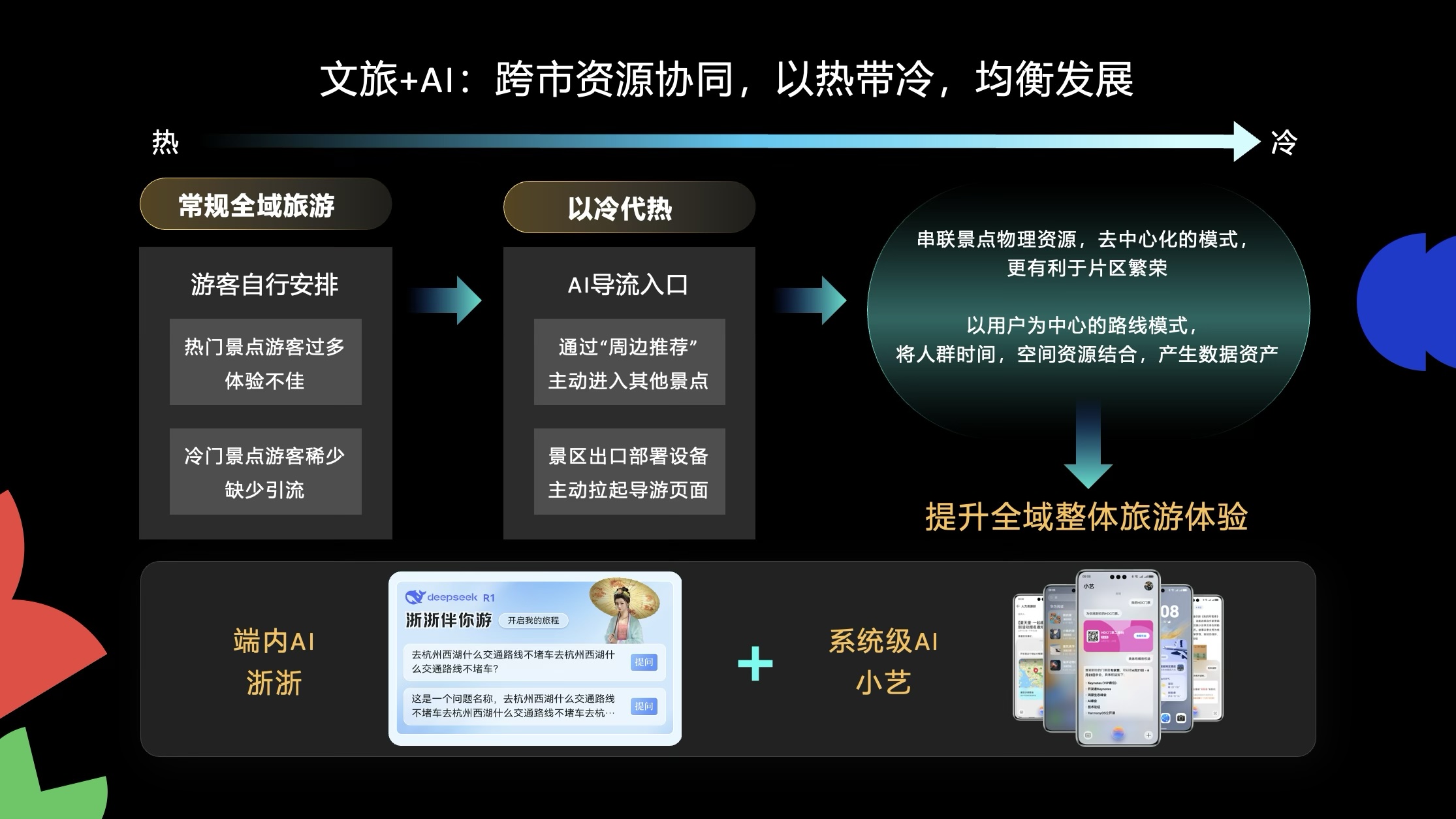
Financial services inherently have extremely high requirements for security and compliance. Bank of Suzhou provided a valuable application paradigm during the HarmonyOS Ecosystem Industry Solutions Forum. According to reports, Bank of Suzhou launched the Bank of Suzhou Mobile Banking HarmonyOS version in September 2024 and subsequently introduced the "Bank of Suzhou Service Hall" meta-service. By searching for any branch on the HarmonyOS system map, users can enter the meta-service and complete online appointments for branch services without logging in or downloading.
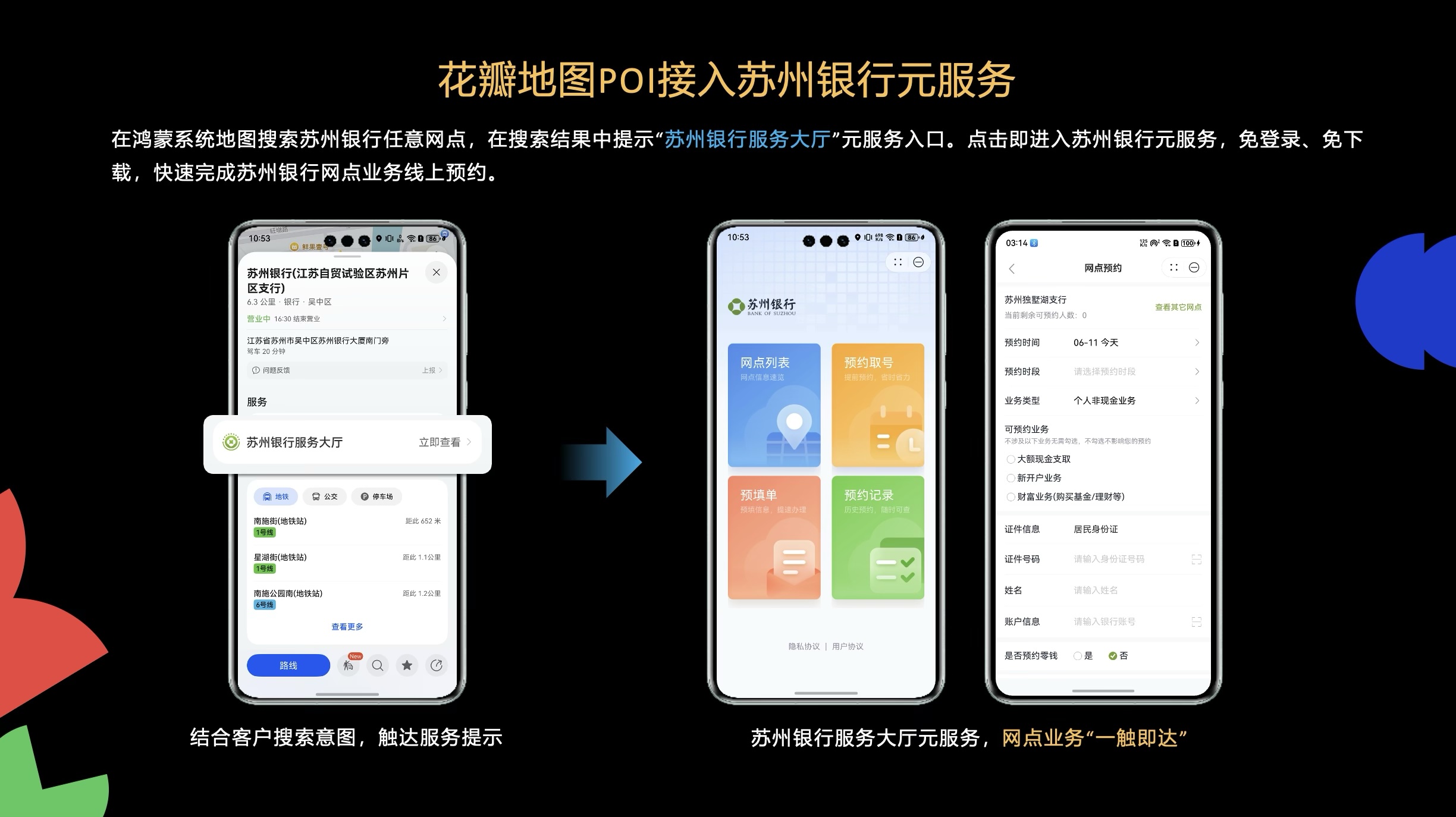
Furthermore, the Bank of Suzhou Mobile Banking HarmonyOS version accesses capabilities such as service cards, tap-and-go, and live windows to continuously enhance the customer experience. For example, customers can receive real-time push notifications on queue progress through live windows. Based on XiaoYi Agent's capabilities, one-step access to financial scenarios such as account overview, credit cards, and wealth management is achieved. In terms of security, Bank of Suzhou has also achieved system-level fraud script detection based on HarmonyOS's innovative security capabilities.
Additionally, transportation is one of the users' high-frequency payment scenarios and a key battleground for HarmonyOS. During the Meta-Service and Service Distribution Sub-forum of HDC 2025, Jiangsu Transportation Smart Card demonstrated the "Smooth Travel Card" jointly created with Huawei Wallet based on the HarmonyOS tap-and-go solution. The core highlight of the Smooth Travel Card is no prepaid storage, but the key behind it is the new experience of "tap-and-go instant card activation and frictionless payment." Users only need to tap once to activate the card for travel, eliminating the redundant steps of purchasing and recharging physical cards, greatly enhancing the user experience. This is not only a product upgrade but also a fundamental change in payment logic and travel methods.
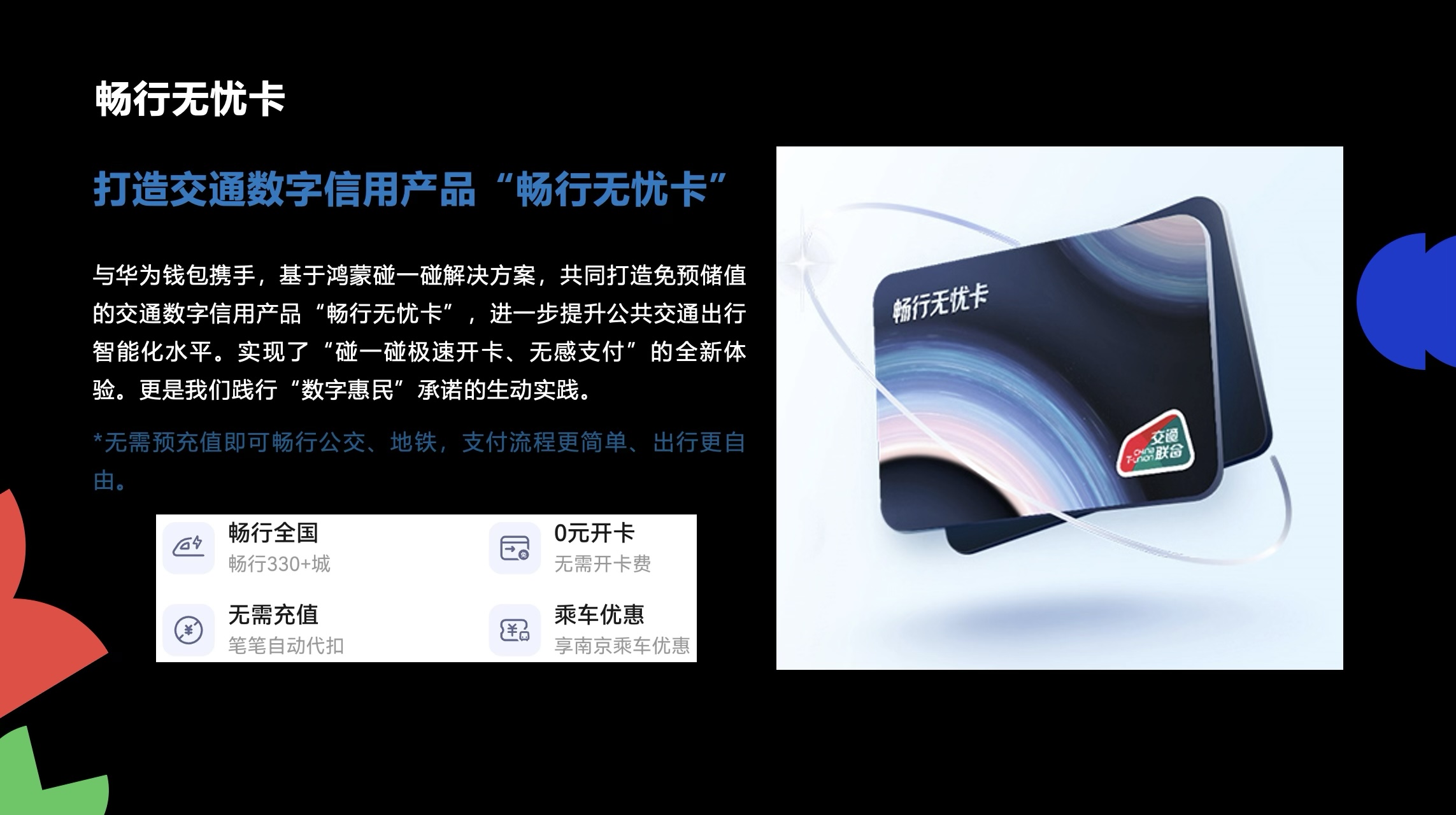
110,000 Updates per Month: How Does HarmonyOS Achieve New Commercialization Speed?
A commercial closed loop is undoubtedly a crucial part of the healthy development of an application ecosystem, and one of the keys lies in more efficient user reach. During HDC 2025, the President of Huawei Terminal Cloud Application Ecosystem BU revealed that the number of global HarmonyOS developers has surpassed 8 million, with the monthly release count of applications setting a record of over 115,780 times, and 92% of applications being reviewed within 24 hours of submission. More importantly, HarmonyOS has achieved a new scenario-based experience based on innovations such as tap-and-go, live windows, and intent frameworks, better helping applications reach users.
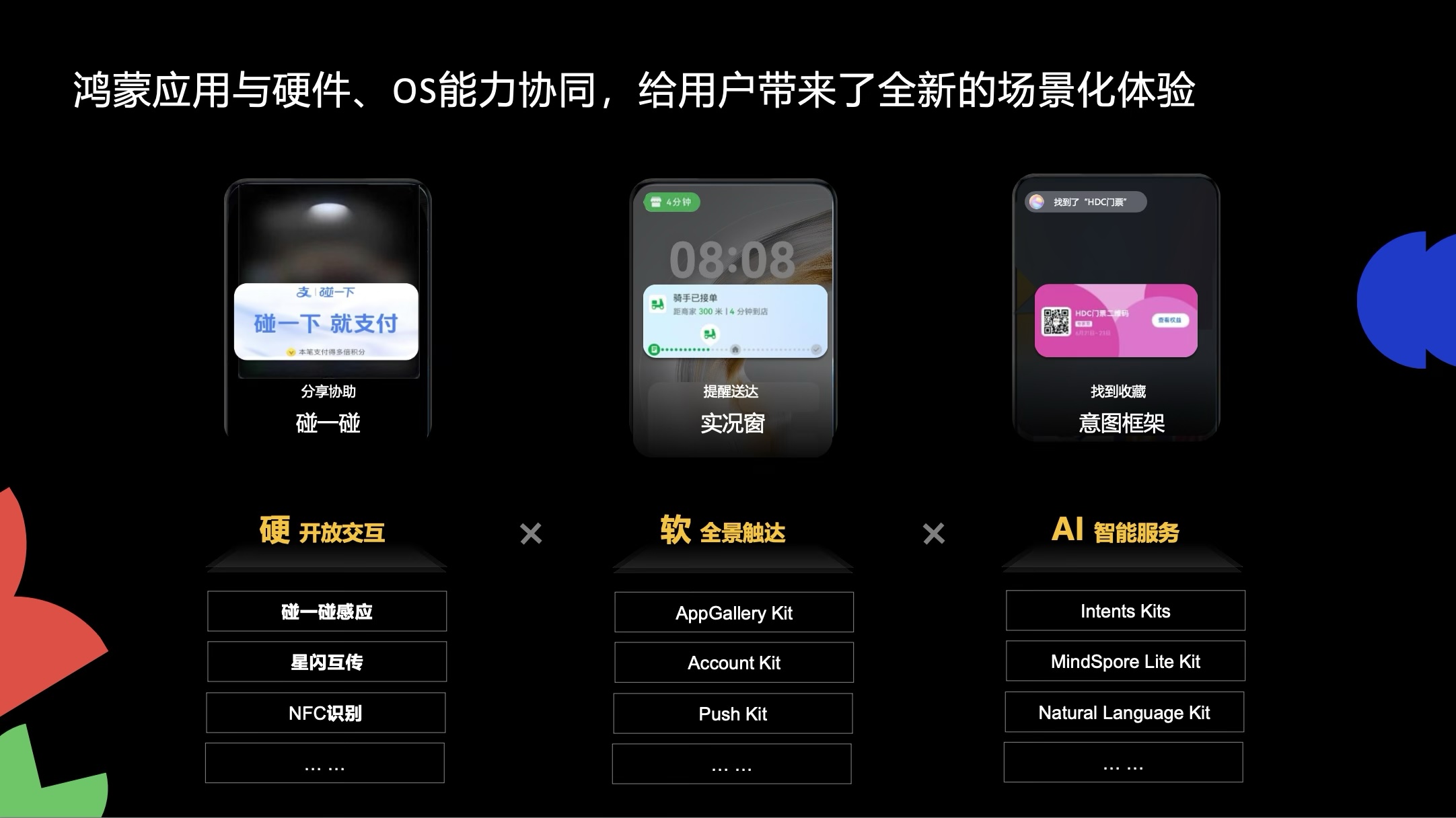
Simultaneously, Huawei AppGallery not only focuses on top applications such as Feishu but also enhances multi-end exposure through mechanisms like "editor's recommendations," broadening user usage scenarios. This helps Feishu further build benchmark applications and provides considerable traffic support for a batch of "small but beautiful" applications. In the six major industries of e-commerce, education, tools, and games, there are numerous cases where the search volume and download volume of "small but beautiful" applications have grown rapidly after being recommended. Combined with a complete payment system, HarmonyOS can help third-party applications quickly achieve a commercial closed loop. It is revealed that the membership penetration rate of some top HarmonyOS applications has increased by 150%.
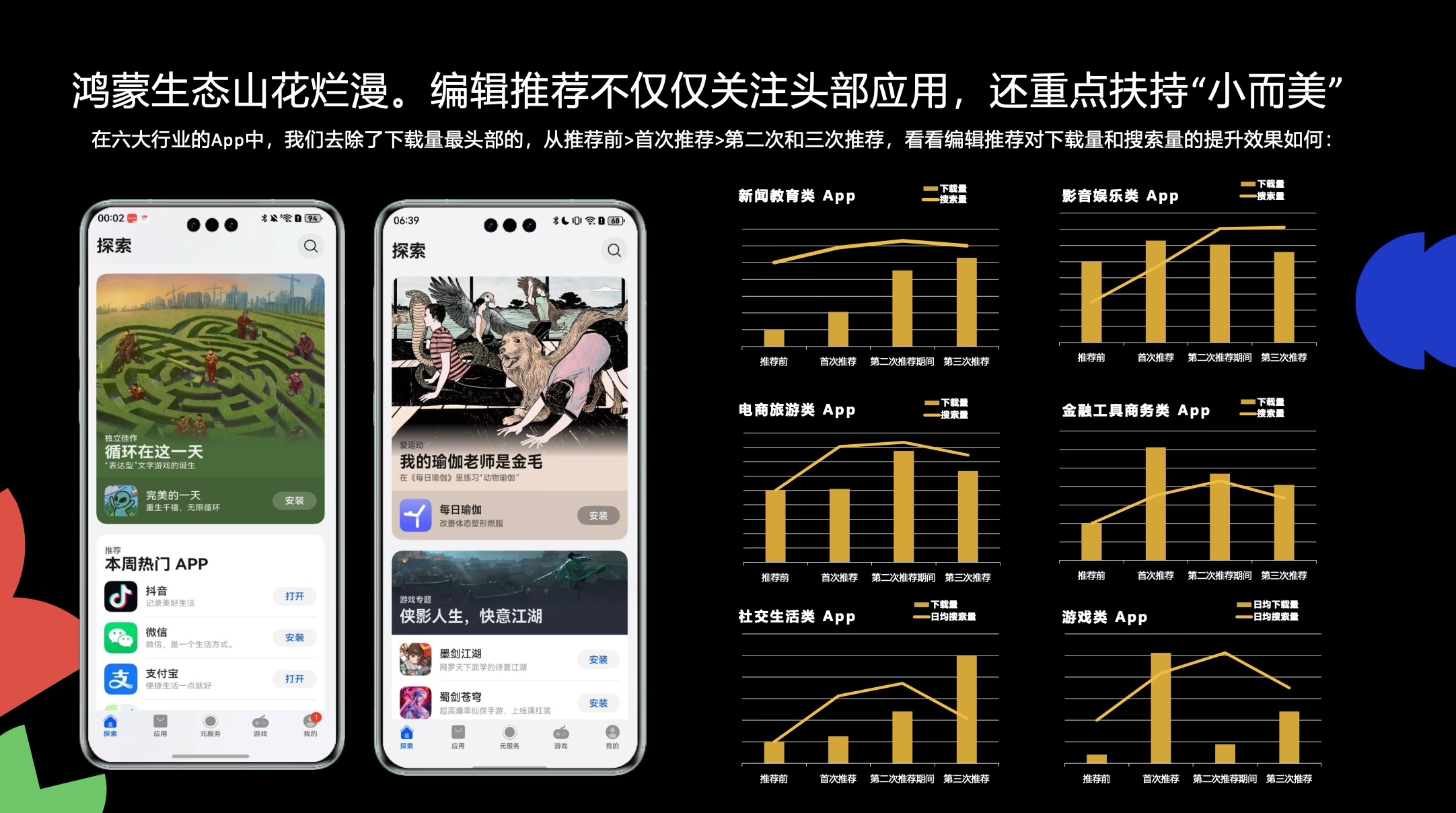
On the other hand, HarmonyOS meta-services have emerged as a novel engine linking users with the ecosystem. According to the President of Huawei Terminal Cloud Services Ecosystem and Payment BU, the meta-service ecosystem witnessed rapid growth in 2025, with over 400 million monthly active users on the Negative One Screen and XiaoYi, and a second-day retention rate of 59%, thanks to intelligent distribution and high-quality supply. Furthermore, HarmonyOS meta-services facilitate minimal development and swift access, forming a seamless loop for commercial traffic.
Taking Eastmoney as an example, the development of service cards was completed in just one week, resulting in a tenfold increase in users and a fourteenfold surge in new visitors. Additionally, by integrating SKU + LBS capabilities into HarmonyOS meta-services, the renowned beauty brand Helena Rubinstein is deeply mining high-potential users, attracting 80% of new customers.
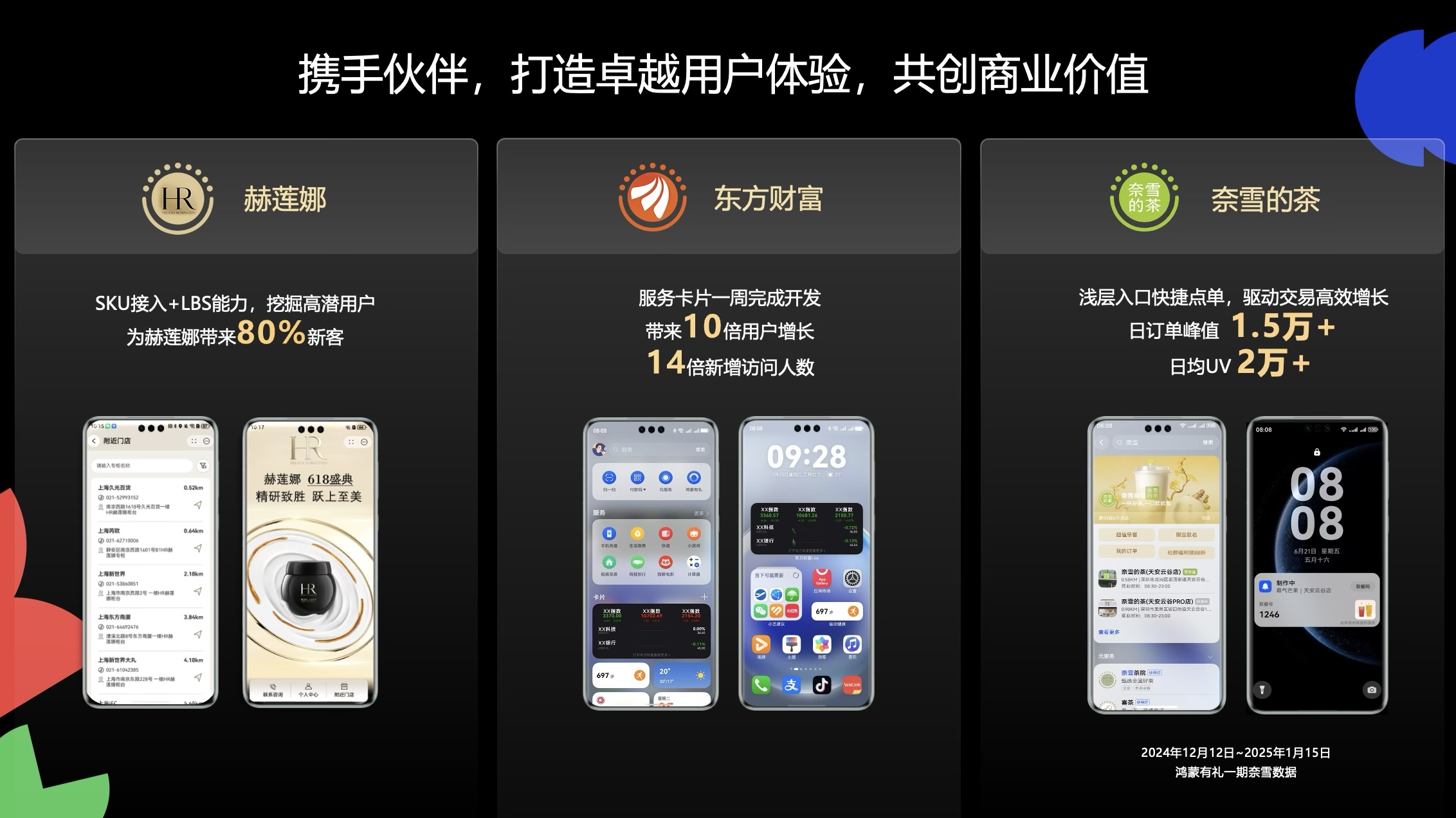
These cases underscore HarmonyOS's accomplishment in reconstructing the closed loop of both supply and demand sides of meta-services through three pivotal strategies: "minimalist development," "intelligent distribution," and "commercial incentives."
Within the HarmonyOS ecosystem, distribution channels for meta-services extend beyond the Negative One Screen, XiaoYi search, and card streams. During HDC 2025, Mengwang Technology showcased the upgraded 5G Meta-Messaging based on "5G + AI + HarmonyOS," creating a comprehensive closed loop encompassing precise push, interactive conversion, and AI analysis, with a focus on enabling meta-service distribution.
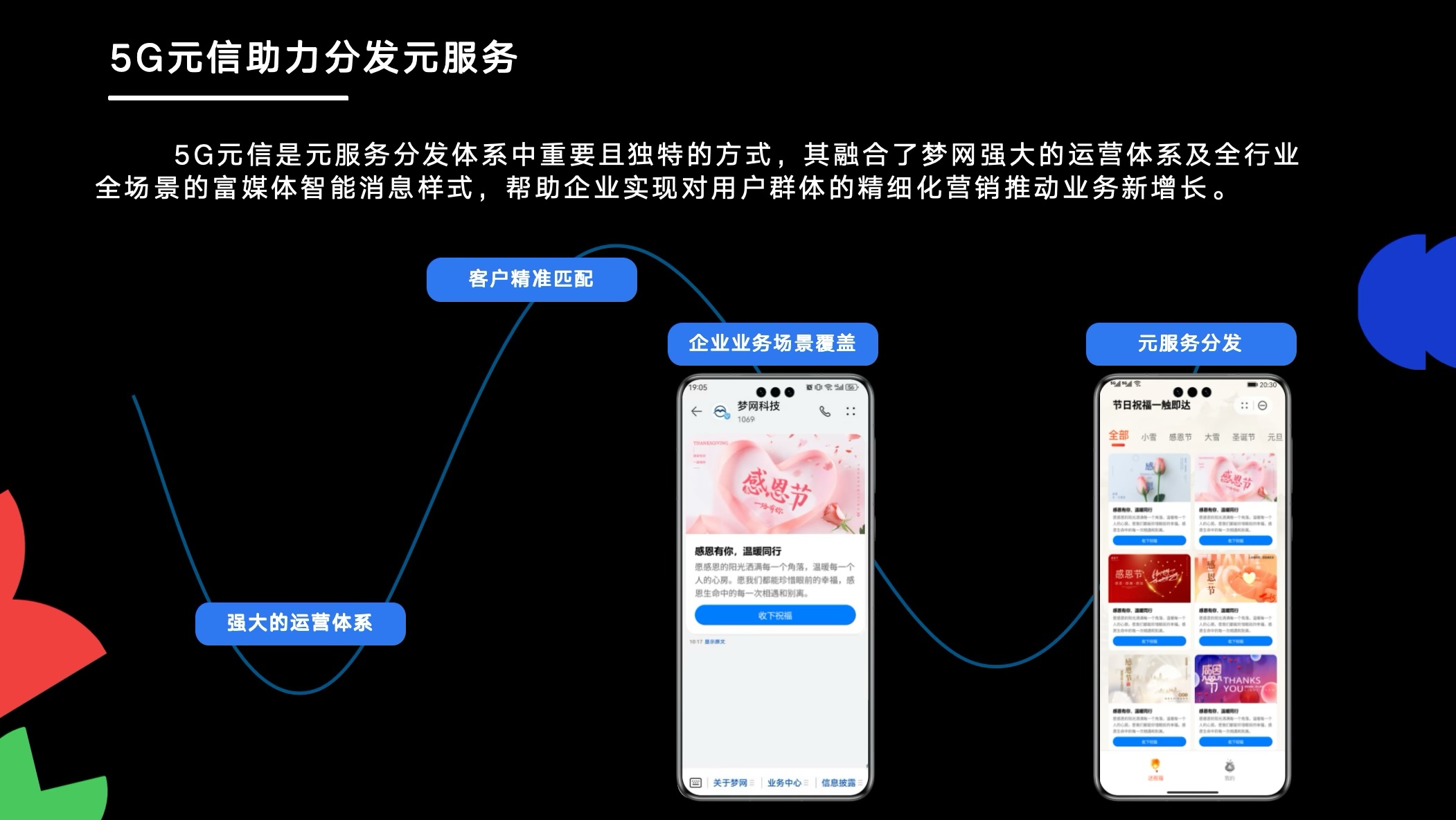
Talent is the genuine trump card in the construction of the HarmonyOS ecosystem.
According to the latest data, as of June 2025, the number of registered developers in the Huawei Developer Alliance has reached 8 million and continues to grow. This rapid increase is fueled by the continuous emergence of talents within the HarmonyOS ecosystem and the continuous enhancement of the talent cultivation system.
During HDC 2025, Xie Tao, Associate Professor at Xi'an Jiaotong University, proposed the strategy of "innovative teaching and integration of industry and education." He noted that during the four rounds of curriculum teaching reform from 2022 to present, 185 students have participated in HarmonyOS project development, resulting in 52 student projects. Xi'an Jiaotong University plans to further consolidate the educational foundation of HarmonyOS while leveraging AI to carry out full-scene, multidimensional teaching and curriculum reform.
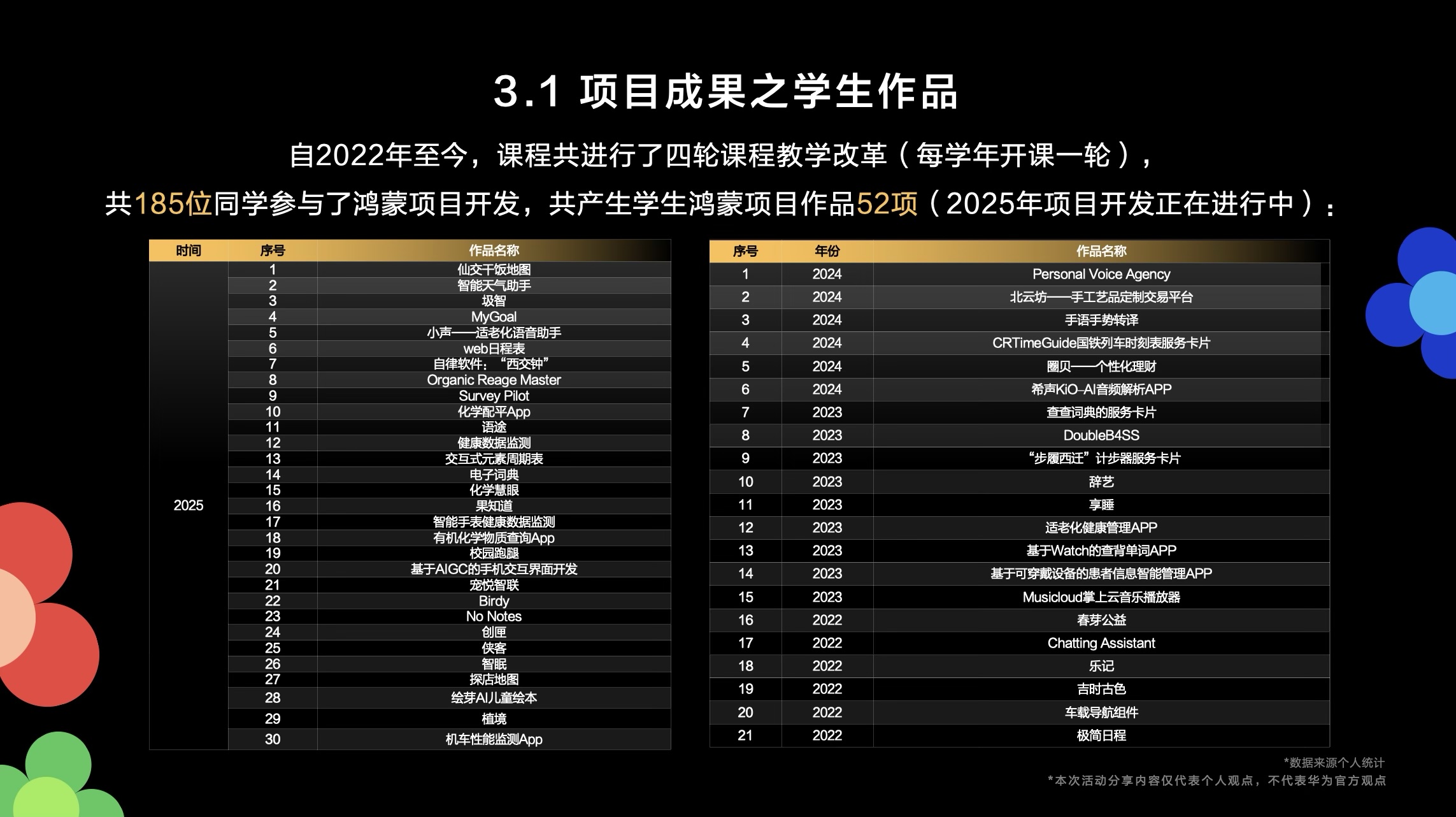
In 2021, Wuhan University and Huawei jointly established the country's first MOOC course on HarmonyOS application development. As the first university in China to offer HarmonyOS courses, Wuhan University's MOOC course on HarmonyOS application development, jointly constructed with Huawei, has been taken by nearly 6,000 students from universities nationwide. Zhao Xiaogang, Deputy Director of the Department of Software Engineering at Wuhan University's School of Computer Science, shared the practice of course co-construction centered on HarmonyOS. While enhancing students' practical skills, it has also influenced around 500 teachers through organizing and participating in HarmonyOS technology-related teacher training. Besides deepening teaching resources, Wuhan University has transformed classroom teaching methods through case-based teaching, realizing the co-construction and sharing of teacher courses.
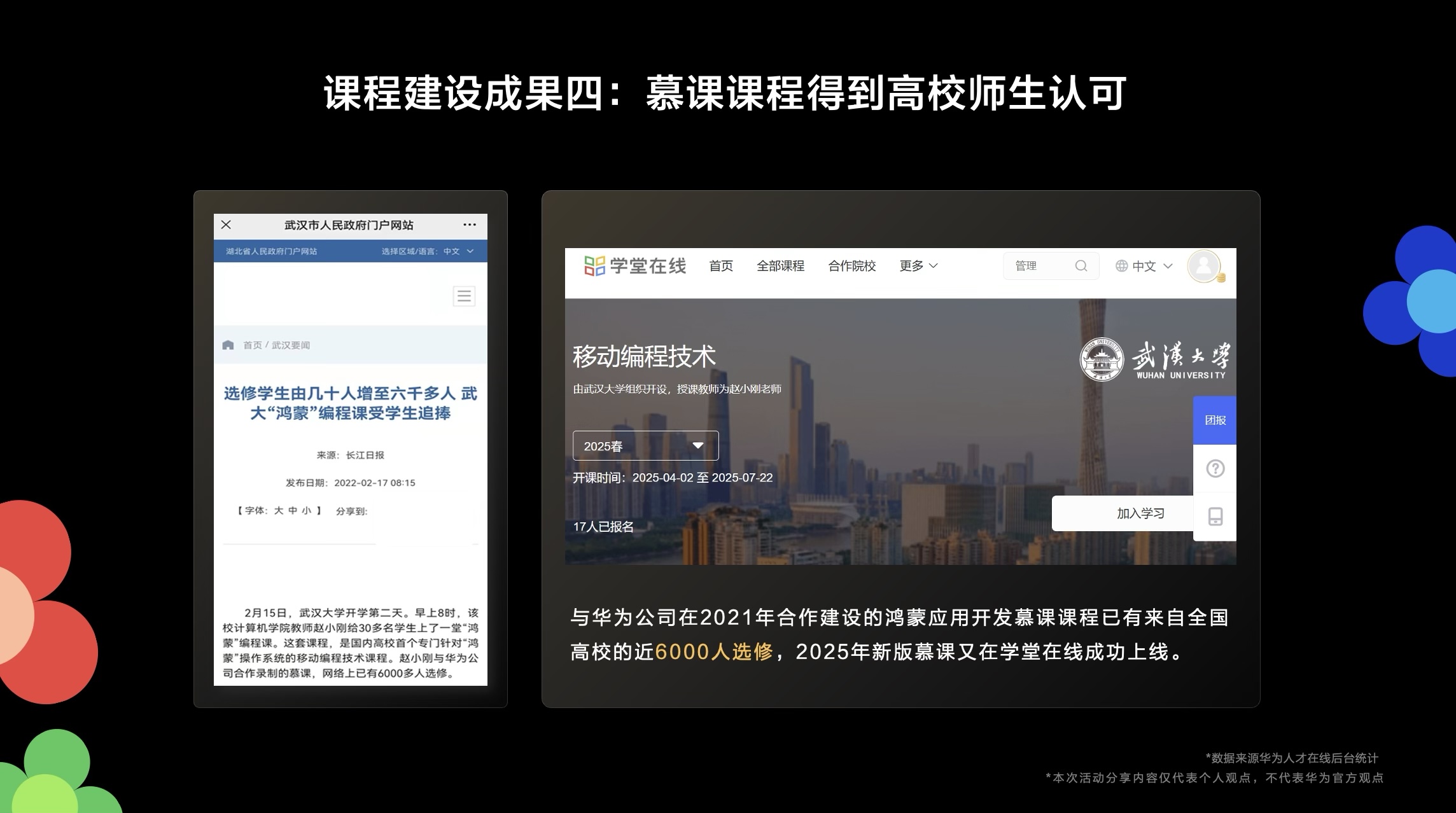
Jiang Xuefeng, Director of the Computer Basic Teaching and Experimental Center at Northwestern Polytechnical University, shared his insights on HarmonyOS talent cultivation from a macro perspective and how the university uses HarmonyOS as a cornerstone to build a new engineering education system adaptable to the "fourth technological revolution." Specifically, Jiang Xuefeng's curriculum system aims to cultivate talents proficient in programming, algorithm understanding, software development, and AI utilization, emphasizing more scenarios, tasks, enterprises, and practical experiences. He also suggested promoting HarmonyOS talent cultivation through full-process, full-element, and full-cycle root technology, exploring new paradigms for HarmonyOS talent development, and forging a new path for software talent cultivation.
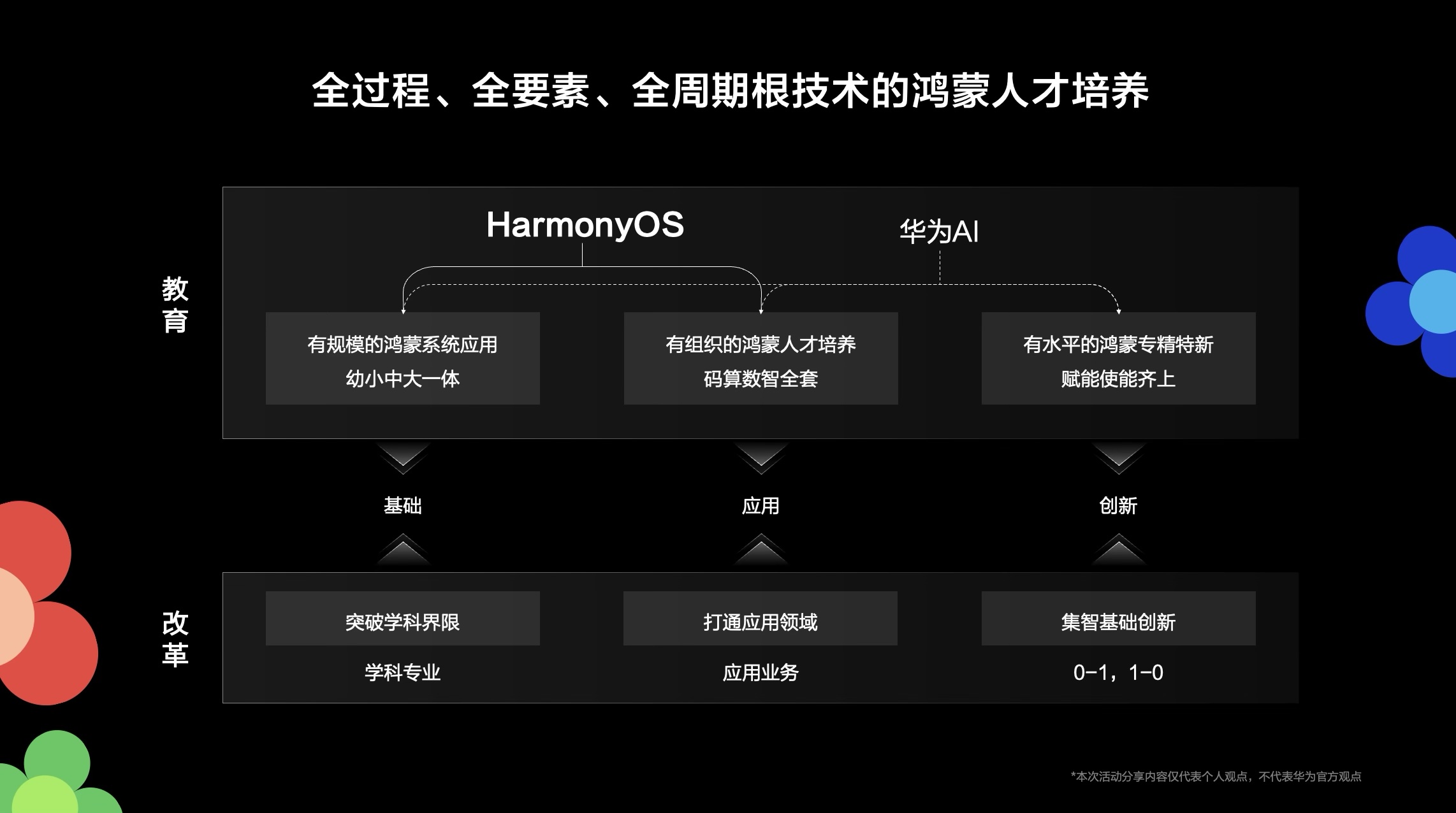
In his keynote speech at HDC 2025, Yu Chengdong stated that the true power to change the world lies not in instantaneous explosions but in sustained vitality that grows ubiquitously. For the HarmonyOS ecosystem, this sustained vitality is fundamentally tied to the talent cultivation system. Moreover, for universities to cultivate computer talents suited to the new era, HarmonyOS is indispensable.
At HDC 2025, everyone is embracing HarmonyOS.
Undoubtedly, HarmonyOS has successfully navigated the challenging "survival" stage and officially entered a new period of development characterized by confidence and strategic expansion. HarmonyOS's commitment to steady progress has enabled the "smiling curve" of experience and ecology to transcend the valley and ascend.
More importantly, from the innovation and openness of HarmonyOS intelligence to the new landing of the government-enterprise collaboration platform and the deep integration of scenario-based services across thousands of industries, every presentation at the HDC 2025 sub-forum confirms that HarmonyOS's strategic layout as a digital foundation is not mere rhetoric but is being swiftly implemented in the practical applications of developers and industries.
In summary, the development of the HarmonyOS ecosystem transcends slogans and visions, solidly advancing the breadth and depth of the ecosystem. It drives application innovation through capability openness and feeds back into the ecosystem's growth through application innovation. This is why everyone is embracing HarmonyOS.
In the long run, the full potential of HarmonyOS remains untapped. Whether it's connectivity, security, smoothness, or intelligence, the cumulative efforts of HarmonyOS and its partners in every innovative detail will converge into a broader ecological landscape. For developers, this may be the best era, as HarmonyOS provides an accessible new platform to create a digital world that truly belongs to the future.
Source: Leitech
The images in this article are from: 123RF Authentic Library Source: Leitech

